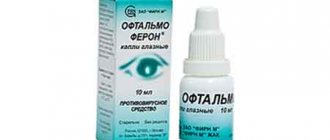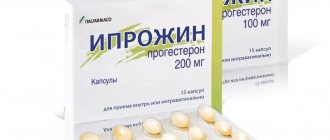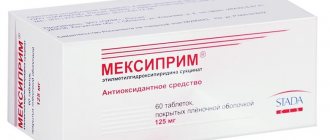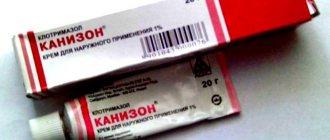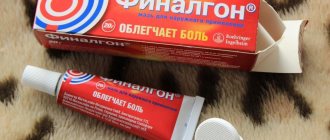The drug Adonis Bromine is considered as a sedative. The main active ingredients of the medicinal composition are adonis extract and potassium bromide. Such components ensure the achievement of a sedative and cardiotonic effect. In folk medicine, the drug has been used for a long time; pharmacological advances have made it possible to obtain the most convenient dosage form. In addition, the drug composition has a weak diuretic effect.
Compound
1 tablet contains active ingredients:
- 69.07 mg - dry extract of adonis ( adonis );
- 250 mg - potassium bromide .
Additional Ingredients:
- potato starch;
- sunflower oil;
- magnesium carbonate;
- talc;
- refined sugar;
- calcium stearate;
- colloidal silicon dioxide;
- titanium dioxide;
- yellow wax;
- gelatin;
- paraffin;
- quinoline yellow.
Composition, release form and analogues
The active ingredients of Adonis-Bromine are glycosides, the main of which are cymarin and adonitoxin.
The composition of the medicinal product includes:
- Dry extract of Adonis spring (Adonis);
- Potassium bromide (72.5%);
- Excipients (talc, potato starch, calcium stearate, titanium dioxide, gelatin, beeswax, refined sugar, etc.).
The drug is available in the form of biconvex yellow film-coated tablets. In the cross section, two layers are clearly visible. One package (a dark glass jar) contains 25 tablets.
At the moment, there are no structural analogues of Adonis-Bromine (with the same active substance). Drugs that have the same ATC code or international nonproprietary name include Alora, Bellaspon, Valocormid, Herbion, Deprim, Doppelherz, Karfised, Klimased, Melissa grass, Nevrosal, Novo-Passit, Notta, Persen, Relaxil, Sedasen, Sedavit, Snoverin, Fitosed and others.
Pharmacodynamics and pharmacokinetics
Adonis-Bromine is a herbal medicine that has cardiotonic and sedative effects . Adonis ( adonis ) contains, in addition to the active ingredients - glycosides , also adomidoside, saponins, coumarins, adonylic acid, phytosterol, quinones and adonite alcohol. In terms of their effectiveness, Adonis glycosides are between N. digitalis and Strophanthus . They exhibit inotropic effects (increasing contractility), negative chronotropic activity (slowing heart rate) and negative bathmotropic effects (decreasing muscle excitability of the heart).
Compared to other glycosides adonis compounds are characterized by a stronger diuretic and sedative effect.
Potassium bromide also has a sedative effect, while at the same time enhancing inhibition processes in the cerebral cortex. These effects help restore the balance between the processes of inhibition and excitation at times of increased central nervous system .
Photo and description of the plant Adonis spring
The brown perennial plant grows upright and has cord-like appendages. It has a smooth, rounded stem with dense leaves.
The erect shoot reaches a height of 20 cm before flowering and 40 cm after the plant has flowered.
The leaves, which are located in the root part of the plant, are scaly and have a brown tint. The upper leaves are palmately divided with narrow linear lobes.
This buttercup species has large single flowers that are located on the tops of the shoots. The average diameter of the inflorescence is 50 mm, in rare cases it reaches 80 mm. The flower consists of 15-20 oblong yellow petals. The plant blooms from mid-spring to the end of June.
The spherical fruits consist of 30-40 nuts. Fruit length up to 20 mm. They ripen in mid-summer.
Spring Adonis is common in Crimea, Siberia, Ciscaucasia and European Russia. Rarely found outside these natural areas.
Adonis grows mainly in the steppe and forest-steppe zones. Often found on slopes, meadows, limestone, hills and forest edges.
The upper part of the shoot with leaves and flowers, which is located 5-10 cm above the soil level, is used as a medicinal raw material.
Contraindications
- severe bradycardia ;
- hypersensitivity to the ingredients of the drug;
- enterocolitis and gastritis during periods of exacerbation;
- peptic ulcer;
- Adams-Stokes-Morgagni syndrome;
- AV block;
- angina pectoris (use only for concurrently diagnosed heart failure);
- endocarditis;
- ventricular tachycardia;
- glycoside intoxication;
- myocardial infarction (can be used only for severe heart failure with myocardial dilatation);
- hypercalcemia;
- WPW syndrome;
- hypokalemia;
- carotid sinus syndrome;
- isolated mitral stenosis ;
- (thoracic) aneurysm
- shock;
- childhood;
- hypertrophic cardiomyopathy.
Indications for use
List of indications for use:
- irritability;
- vegetative-vascular dystonia;
- chronic cardiac irritability.
The product can also be used as a mild sedative.
for adults
Patients of this age group use the medicinal composition if indicated and in the absence of contraindications. The drug is well tolerated; adverse reactions associated with its use are extremely rare.
for children
Studies of the mechanisms of drug use in pediatrics have not been reported. There are no data determining the safety of the drug. If prescribed by a doctor, the product can be used by persons over 14 years of age.
for pregnant women and during lactation
There is no information determining the safety of using the drug during pregnancy. The drug cannot be used during this period of time. The drug is not recommended for use during breastfeeding.
Side effects
The use of Adonis-Bromine may cause nausea , in some cases leading to vomiting . These effects are associated with the direct effect of cardiac glycosides on chemosensitive receptors and the vomiting center, as well as with the reaction of the gastric mucosa to the irritating effect of the drug. The emetic effect is, to some extent, due to the response of the cardiac receptors to their stimulation.
When taking increased doses of Adonis-Bromine, the following were observed: allergic manifestations , diarrhea , loss of appetite, heart rate , central nervous system disorders ( headache , anxiety, drowsiness or insomnia , visual disturbances, depressive symptoms ).
Analogs
The drug Adonis Bromine has a sufficient number of analogues in terms of the mechanism of action and active substance. Patients should remember that replacing a drug prescribed by a doctor with an analogue is unacceptable on their own.
Adonis
Adonis is a sedative drug of completely natural origin. The drug is well tolerated and does not provoke adverse reactions in patients of various groups. The drug is not recommended for use during pregnancy and breastfeeding, since the mechanism of action of the drug has not been fully studied.
Adoniside
The drug Adoniside has sedative properties. It is worth noting that with regular use, a mild diuretic effect is also observed, which is aimed at eliminating edema of various localizations. The drug is well tolerated, adverse reactions occur rarely. The product has a fairly limited range of contraindications for use.
Corglicard
Korglykard is a medicinal composition with sedative properties. Corglicard is often used as part of complex therapy in the treatment of diseases of the heart and blood vessels. The drug is well tolerated, adverse reactions during administration are not traceable.
Overdose
An overdose of the drug can lead to the development of “ bromism ,” with symptoms of lethargy, cough , conjunctivitis , runny nose , and skin rash . Nervous overexcitation , gastrointestinal upset, nausea and vomiting are also possible .
Large doses of cardiac glycosides can cause severe bradycardia , trigeminy , bigeminy , slowing of atrioventricular conduction, and polymorphic extrasystole .
Taking toxic doses leads to ventricular flutter with possible cardiac arrest . Due to the accumulation of Adonis-Bromine substances, toxic effects of the drug can be observed with its long-term use even at recommended doses.
When diagnosing intoxication , Adonis-Bromine is temporarily stopped and, if necessary, antiarrhythmic drugs are prescribed.
In case of acute overdose, gastric lavage with water containing K arbolene (without inducing vomiting ), taking a saline laxative, inhaling oxygen and bed rest is indicated. of atropine sulfate (0.1% solution) is also recommended
How to collect and dry a plant
The preparation of raw materials begins in dry and clear weather immediately after the start of flowering. The stems of the plant are cut with a sharp knife or sickle at a height of 5-10 cm from the soil level.
It is strictly forbidden to pull out the grass along with the rhizome, so as not to ruin the plant population. The Adonis genus is considered rare, so raw materials are collected no more than once every 4 years.
After collection, the plant is dried in a well-ventilated area, such as an attic, or under a canopy outside. The main rule is that raw materials should not be exposed to direct sunlight. Dry the plant at a temperature of no more than 40 degrees. Readiness is determined by the structure of the stem. If it does not bend, but breaks with a crunch, then drying is complete.
Store the plant for no more than a year separately from other herbs, as it is poisonous.
Interaction
When combined with other cardiac glycosides ( lily of the valley , trophanthus , and digitalis ), increased toxic effects were observed .
Adonis-Bromine, when used in parallel with antiarrhythmic drugs such as Quinidine , Disopyramide, Procainamide,
etc., calcium supplements, glucocorticoids , laxatives , can enhance their effectiveness as well as toxicity.
The tablets enhance the suppressive effect on the central nervous system of benzodiazepine derivatives , sedative-hypnotic and anticonvulsants , neuroleptics and ethanol.
Inhalation anesthesia with Halothane , carried out during Adonis-Bromine therapy, increases the content of bromide ions , thereby increasing the effects and toxicity of the drug.
Salty foods reduce the excretion of bromide , thus reducing the effectiveness of treatment.
Anticholinergic drugs improve the absorption of Adonis-Bromine, and antacids worsen it.
Instructions
The specialist recommends taking the drug three times a day, one tablet. For patients suffering from impaired renal function (with a reduced indicator allowing assessment of kidney function, up to 50% of normal), it is recommended to reduce the single dosage of the drug by half or increase the interval between doses to 12 hours.
The recommended daily dose of the drug is 5 tablets. The maximum therapeutic effect occurs four hours after the first dose of Adonis-Bromine. The chemical components of this drug are completely eliminated from the patient’s body two days after the end of administration.
It is very important to adhere to the required diet during the treatment period. The patient's diet should include foods with a high concentration of potassium, including: dried apricots, liver, beans, cabbage, grapefruits, parsley, black currants, cucumbers, apricots, baked potatoes, freshly squeezed juices.
Reviews of Adonis-Brom
Positive reviews of Adonis-Bromine include the noticeable effectiveness of the tablets, their low cost and low number of side effects, among which the most pronounced and frequently mentioned is drowsiness .
Negative reviews from some patients indicate a slow increase in the effects of therapy and the insufficient speed of action of the tablets.
In general, the effect of Adonis-Bromine occurs quite quickly, but some situations actually require longer treatment, which requires taking the drug for a long time.
Applications and dosages
Recommended doses are determined individually for each patient. When determining them, the specialist must take into account the patient’s condition, as well as the activity of the drug interaction in his body.
for adults
The drug can be used by patients of this age category who have no contraindications for use. In most cases, the drug is well tolerated; adverse reactions during its use are extremely rare. The maximum daily dose for such persons is 3 tablets per day. This dose should be divided into several doses.
for children
The drug is not recommended for use in pediatric practice. The mechanism of action of the drug on the children's body has not yet been fully studied. There is no data on drug tolerance.
for pregnant women and during lactation
The drug is contraindicated for use during pregnancy and breastfeeding. The active components can penetrate the placental barrier and be absorbed into breast milk. Safety studies of the effects of the products have not been conducted.
Bromine (Br, Bromum)
History of bromine
The discovery of bromine occurred in the first third of the 19th century; independently of each other, the German chemist Karl Jacob Loewich in 1825, and the Frenchman Antoine Jerome Balard in 1826 introduced the world to a new chemical element. An interesting fact is that Balar initially named his element murid (from the Latin muria - brine), because he made his discovery while studying the Mediterranean salt trades.
General characteristics of Bromine
Bromine (from the ancient Greek βρῶμος, literally translated “smelly”, “stench”, “stink”) is an element of the main subgroup of group VII of the fourth period of the periodic table of chemical elements D.I. Mendeleev (in the new classification - an element of the 17th group). Bromine is a halogen, a reactive nonmetal, with atomic number 35 and molecular weight 79.904. Br is used for designation .
Finding bromine in nature
Bromine is a widespread chemical element and is found almost everywhere in the external environment. There is especially a lot of bromine in salt water - seas and lakes, where it is available in the form of potassium bromide, sodium bromide and magnesium bromide. The largest amount of bromine is formed during the evaporation of sea water; it is also found in some rocks, as well as in plants.
The human body contains up to 300 mg of bromine, mainly in the thyroid gland; bromine also contains blood, kidneys and pituitary gland, muscles and bone tissue.
Physical and chemical properties of bromine
Bromine is usually a caustic heavy liquid, has a red-brown color and a sharp, very unpleasant (smelly) odor. It is the only non-metal that is in a liquid state at room temperature.
Bromine (as well as bromine vapor) is a toxic and poisonous substance; when working with it, it is necessary to use chemical protective equipment, because bromine causes burns when it comes into contact with human skin and mucous membranes.
The composition of natural bromine is two stable isotopes (79Br and 81Br), the bromine molecule consists of two atoms and has the chemical formula Br2.
The body's daily requirement for bromine
The need of a healthy body for bromine is no more than 0.8-1 g.
Foods rich in bromine
Along with the bromine present in the body, a person receives bromine from food products. The main suppliers of bromine are nuts (almonds, hazelnuts, peanuts), legumes (beans, peas and lentils), wheat and durum wheat pasta, barley, dairy products, algae and almost all types of marine fish.
Danger and harm of bromine
Elemental bromine is a potent poison; it is strictly prohibited to take it orally. Bromine vapor can cause pulmonary edema, especially in those who are prone to allergic reactions or have diseases of the lungs and respiratory tract (bromine vapor is very dangerous for asthmatics).
It is not recommended to use bromine preparations for people who, due to the specific nature of their work, need stable concentration of attention (drivers, climbers, high-altitude installers).
Signs of excess bromine
An excess of this substance usually occurs with an overdose of bromine preparations; it is categorically undesirable for people, because it can pose a real health hazard. The main signs of excess bromine in the body are inflammation and rashes on the skin, disruptions in the digestive system, general lethargy and depression, persistent bronchitis and rhinitis not associated with colds and viruses.
Signs of bromine deficiency
A lack of bromine in the body is manifested by insomnia, slow growth in children and adolescents, and a decrease in the level of hemoglobin in the blood, but these symptoms are not always associated with an insufficient amount of bromine, so to confirm suspicions, you need to visit a doctor and take the necessary tests. Often, due to a lack of bromine, the risk of spontaneous abortion (miscarriage at different stages, up to the third trimester) increases.
Beneficial properties of bromine and its effect on the body
Bromine (in the form of bromides) is used for various diseases, its main effect is sedative, therefore bromine preparations are often prescribed for nervous disorders and sleep disorders. Bromine salts are an effective treatment for diseases that cause seizures (especially epilepsy), as well as disorders of the cardiovascular system and some gastrointestinal ailments (stomach and duodenal ulcers).
Bromine digestibility
The absorption of bromine is slowed down by chlorine, aluminum, iodine and fluorine, so you should take medications containing bromine salts only after consulting a doctor.
Bromine and its effect on male potency
Contrary to unsubstantiated rumors (more like anecdotes), bromine does not have a depressing effect on the libido and potency of men. Allegedly, bromine in the form of a white powder is added to the food of young soldiers in the army, as well as male patients in mental health centers and prisoners in prisons and colonies. There is no scientific evidence for this, and rumors can be explained by the ability of bromine (its preparations) to have a calming effect.
According to some sources, bromine helps to activate sexual function in men and increase both the volume of ejaculate and the number of sperm contained in it.
Use of bromine in life
Bromine is used not only in medicine (potassium bromide and sodium bromide), but also in other areas, for example in photography, oil production, and in the production of motor fuel. Bromine is used in the manufacture of chemical warfare agents, which once again emphasizes the need for careful handling of this element.
Author: Victoria N. (especially for) Copying this article in whole or in part is prohibited.
Useful properties of Adonis
Almost all parts of the plant are used as raw materials for medicines, but the medicinal properties of the Adonis flower are most valued.
The composition of adonis includes such useful components as fisterin, glycosides, adonite alcohol, various trace elements, vitamins and tannins.
The list of medicinal properties of adonis is impressive. The plant is rich in cardiac glycosides such as imarin, adonivernoside and adonitoxin. It is they who have the main healing effect from the use of adonis.
The main medicinal properties of adonis are:
- soothing;
- diuretic;
- cardiotonic;
- vasodilation;
- relieving pain;
- anticonvulsant.
Adonis is used to treat the following diseases and conditions:
- insomnia – an alcohol tincture of the plant is used as a sleeping pill
- neuroses and asthenic syndrome - use alcohol infusion diluted with water
- fever and colds (flu, acute respiratory infections and other viral diseases) - it is good to use adonis tea
- measles – also adonis based tea
- whooping cough, pneumonia and bronchitis - a water infusion of the herb is required and tea with the plant can be used as an adjuvant
- kidney disease - use of an aqueous infusion of the plant or its alcohol tincture. Combine with other herbal ingredients such as bearberry and horsetail
- hypertension - a water infusion, with the main component adonis. The composition includes motherwort, hawthorn, cudweed, horsetail, birch leaves
- certain subtypes of hepatitis - use an aqueous infusion of Adonis herb
- heart disease with accompanying symptoms such as shortness of breath, swelling and dizziness - take a mixed herbal mixture of adonis and lily of the valley
- Vegetative-vascular dystonia - taking alcohol infusion of Adonis
- Epilepsy, psychosis - use of tea or water infusion of this plant.
Where does adonis grow?
This plant is quite common: it can often be seen in Europe, Ciscaucasia, and Siberia.
The plant prefers mainly steppe areas, but it can often be found on sun-drenched edges and outskirts of forests, groves, hills and mountain slopes, and open meadows.
But, currently this grass is considered rare and therefore needs protection.
The flowering period falls in the middle and end of spring (April-May), and ripening occurs in May-June.
It is also popularly called wallflower, due to the yellow color of its flowers, hare grass, hare poppy and hairy grass.
Photo of Adonis
Recipes with Adonis
- Infusion. Take a tablespoon of herb, pour a glass of boiling water and leave for 3-4 hours. Take a tablespoon three times a day.
- If long-term therapy is required, you can take 2 tablespoons of Adonis per 0.2 liter of boiling water. After the brewed herb has infused, the resulting product should be drunk in small portions per day.
- The following recipe is effective for treating neuroses: mix 1 part adonis, 3 parts nettle, two parts valerian, 4 parts lemon balm, take a tablespoon of herbal mixture and pour 0.2 liters of boiling water. Exposure time – 10 minutes, method of use – 2 times a day in the amount of 50 ml at a time.
- For the treatment of dropsy: adonis + birch buds + bearberry + horsetail. All components are taken in the size of a tablespoon, mixed and poured with boiling water. After this, the tea leaves are placed in the oven at low temperature and kept there for 120 minutes, then the product is boiled over low heat for 5 minutes. You need to take a tablespoon every hour. Recommendations for the duration of therapy: avoiding salt consumption, proper rest, taking a bath once every 2 days. Thanks to the use of this remedy, it will be possible to reduce swelling, improve well-being, and increase the volume of fluid released.
- The following recipe is suitable for getting rid of stones in the urinary tract: two parts parsley, one part adonis and shepherd's purse, one and a half parts juniper berries, dandelion, omentum (roots), and bearberry (leaves). Mix all the ingredients; for one tablespoon of the mixture you will need 200 ml of boiling water, pour it over it and place it in a steam bath for 30 minutes. Directions for use: 2-3 times a day in a volume of 100 ml.
- To get rid of a sore throat: pour a handful of adonis seeds into 0.2 liters of boiling water and boil for 15 minutes. After cooling, add a glass of linden honey, bring to a boil again and cool, then add another 25 ml of cognac. Directions for use: once every half hour in the amount of one tablespoon.
- For intestinal pain: prepare a mixture of one part fennel (seeds) and adonis (herb), add two parts mint and three parts chamomile with three parts buckthorn bark. Directions for use: orally, three times a day after meals.
- To relieve constipation: 5 parts buckthorn bark, 1 part adonis (seeds) and 2 parts fennel (fruit) with 2 parts elderberry (flowers). Brew 1 tablespoon of 0.2 liters of boiling water and consume 0.2 liters after meals.
- To relieve bronchospasm in a child: string, chamomile, thyme, violet and adonis seeds proportions – 5:2:2:1:1. Mix the ingredients, take a tablespoon of the mixture and pour 0.2 liters of boiling water. Infusion time is 20 minutes. Then strain the infusion, add sugar and take it before bed, as well as between meals. The infusion cannot be stored.
In addition, the dosage for a child must be strictly observed, as severe poisoning can be provoked; below are the daily doses of Adonis:
- Children under 6 months – 0.03 g;
- Six months to a year: 0.05 g;
- Children after two years – 0.1 g;
- 3-4 years – 0.15 g;
- 5-6 years – 0.2 g;
- 7-9 years – 0.3 g;
- 10-14 years – 0.3-0.5 g.
- When treating bronchial asthma, the following recipe is used: in equal proportions you need to take Adonis grass, violet, elecampane (root), thyme (herb), coltsfoot. Place the mixture in a thermos (2 tablespoons), pour 500 ml of boiling water, leave for an hour. You need to take 100 ml 3 times a day on an empty stomach. The infusion should be warmed up first.
- To treat myositis, Adonis herb in the amount of a tablespoon is poured with boiling water (0.2 l) and left for an hour. If you are concerned about muscle and joint pain, then the infusion should be taken a tablespoon three times a day.
- The following recipe is suitable for gallstones: in equal proportions you need to take the leaves of white acacia and adonis herb, add agrimony and soapwort to them in two parts. The components are mixed, after which a tablespoon of the mixture is brewed with 500 ml of boiling water and kept on low heat for 30 minutes. Take 70 ml 3 times a day before meals.
- For an exhausting cough, brew a teaspoon of Adonis with 0.1 ml of boiling water and leave the infusion for 90 minutes. After which it is filtered and taken a tablespoon 3 times a day.
- If a person experiences convulsions, then a tablespoon of the herb should be poured into 0.3 liters of boiling water and left for at least 2 hours. After straining, you can take a tablespoon 3 times a day. The infusion cannot be stored.
- For insomnia, you need to chop the herbs, add 1 to 10 vodka and put them in a dark place for 14 days. Take 20 drops three times a day.
